Through a myriad of corporate organizations the controllers of the Homer Laughlin China Company and other investors purchased over four hundred acres of land directly across the Ohio River to establish the town of Newell, West Virginia. In 1902 these investors created the North American Manufacturing Company which controlled the Newell Bridge Company, the Newell Street Railway Company, the Newell Construction Company, the Newell Water and Power Company, and other entities. The many-tentacled corporation moved to establish the town of Newell through the various subsidiary firms listed above. The Homer Laughlin China Company, composed at that time of Louis and Charles Aaron, George W. Clark, and W.E. Wells (the prime controllers of the North American Manufacturing Company) began the construction of a thirty-kiln plant estimated to cost one million dollars. The firm intended to establish the Wells Clark China Company to operate the three east end potteries. When the Newell plant became fully operational during 1907, most, if not all, of the operations were shifted to the new pottery. Although most of the employees of the east end potteries were given jobs in the new plant, the plan to operate as the Wells-Clark Company did not materialize and the three plants stood idle. The closing of the east end potteries must have been a major blow to East Liverpool. During 1908 and 1909, the Homer Laughlin China Company resumed operations in the three east end plants and excitement returned to the east end. By 1910 the largest pottery company in the nation operated four plants, employing 1,800 workers.57 Despite strikes and depressions, the pottery industry of the East Liverpool ---- CHAPTER 5 - 1890-1910-175
All of the elements used by J.E. McDonald and C.A. Smith to establish Chester, West Virginia, including the construction of a bridge and street railway, platting and land development, and the expansion of the local pottery industry across the Ohio River, were employed in the founding of Newell, West Virginia. Only the cast of characters and some of the methods were changed. The area south of Chester began to be developed in May of 1901 when a group of investors known as the Lloyd syndicate began to sell lots on the former Wells farm. These speculators proposed to construct a bridge and railroad yards and to entice at least two iron manufacturers and several potteries to the area. James Newell and E.W. Hill platted a town in 1901 and the sale of lots was reported as being "vigorous." For a second time, the name of South Liverpool was suggested for the new town because the name carried prestige within the pottery industry. In September 1902 Louis I. and Marcus Aaron, W.E. Wells, Joseph G. Lee, John N. Taylor, and Edwin M. Knowles purchased 428 acres of land, including the Lloyd tract, the town site of Newell platted by Hill and Newell, and other pieces of property for seventy-five thousand dollars. The following November these men, all of whom were East Liverpool pottery manufacturers, created the North American Manufacturing Company. Capitalized at one million dollars, the company planned to develop the town, to build a number of industrial establishments, and to connect the area via a bridge and streetcar system to East Liverpool. As mentioned in the preceding chapter, the North American Manufacturing Corporation consisted of the Newell Bridge Company, the Newell Street Railway Company, the Newell Water and Power Company, the Newell Construction Company, the Lake Newell Park Company, and the Lake Newell Floral Company.25
The construction of the bridge and the street railway came first. During the spring of 1904, the corporation secured necessary permits from the federal government for the construction of the suspension bridge and the required franchises and ordinances from city council for the construction of the bridge and street railway. Construction began on 2 June 1904. Although delayed because of a one-week strike by structural iron workers, progress on the sixteen hundred foot span proceeded well. An estimated one thousand people, led by W.E. Wells and Edwin Knowles in the latter's automobile, crossed the bridge on 4 July 1905 when it was officially opened. The Newell Street car line was opened ten days later with a trip across the river and a tour of the new town.26 On 2 May 1905 the stockholders of the North American Manufacturing Corporation, composed primarily of the owners of the Homer Laughlin China Company, voted to invest one million dollars in the construction of a thirty-kiln pottery in Newell. All of the business of the Laughlin company was to be turned over to the new plant once it was operational. The new pottery, which covered an area of fourteen acres, was to be the most modern in the world and was projected to employ over one thousand workers. Construction began in August of 1905 and the first pieces of ware were in production in November of 1906. The following year an exodus of laborers from the east end began when the Homer Laughlin China Company, the area's major employer, announced plans to shut down its East Liverpool potteries. The factories were closed during much of 1908, but they were reopened the following year because even the huge complex in Newell was unable to produce enough to fill all of its orders. The Kenilworth Tile Company also erected a plant on Third Street in Newell in 1906.27
During 1905 thousands of people crossed the new bridge to witness the construction of the pottery, to picnic at Laurel Hollow, or to examine the progress of the town. Once the new pottery was opened, many people began to move to Newell, although many other employees apparently remained in East Liverpool and simply commuted to work. In 1908 only 150 houses with an estimated 576 residents were located in Newell. If the pottery employed approximately one thousand operatives, it is obvious that people did not relocate, at least not immediately. The owners continued to develop their town and to promote its advantages. In an effort to attract workers and residents to its new town, the North American Manufacturing Corporation distributed promotional literature widely. It began, "Mr. Potter: Wouldn't you rather live in a district where, within fifteen minutes ride, you have the choice of thirty-four potteries in which to work? East Liverpool, Newell, Chester, and Wellsville afford you this unexcelled opportunity." The promoters then proceeded to list employment opportunities currently offered and projected for the near future, stating that one thousand additional men would be needed. They explained that Newell was a great community in which to live and added, "There is little if any foreign element, only the high-class Americans, English, German, and Irish bloods, predominant races constituting the premier development of America's citizenship."28 ------- The City of Hills and Kilns -- CHAPTER 6 - 1890-1910- 193 -195

Courtesy of J. David Conley, Trustee ELHS, and a member of management, Homer Laughlin Pottery.
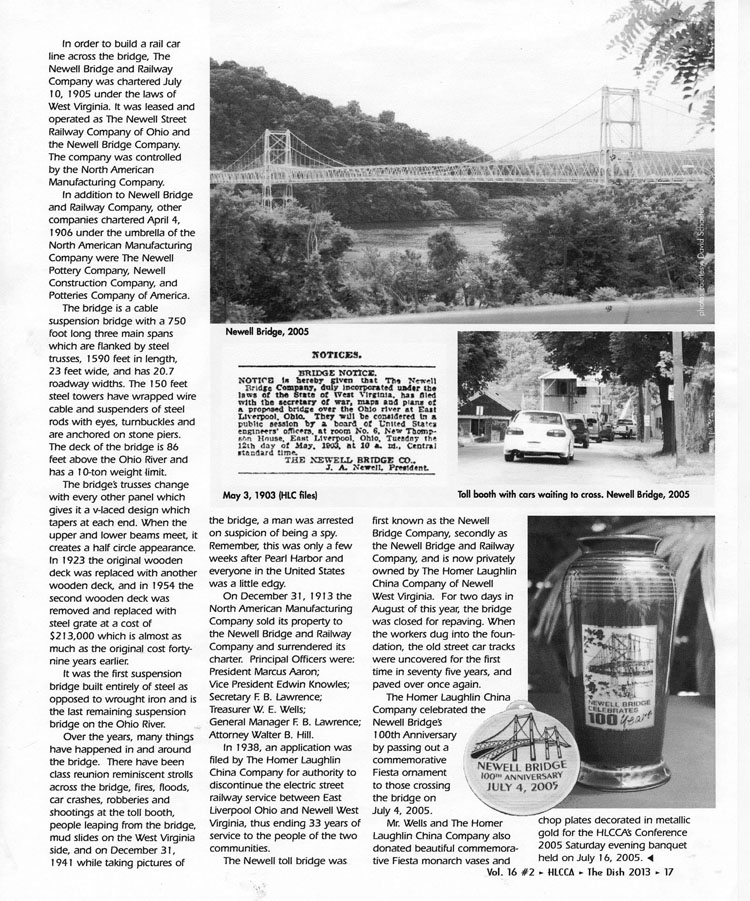
Courtesy of J. David Conley, Trustee ELHS, and a member of management, Homer Laughlin Pottery.
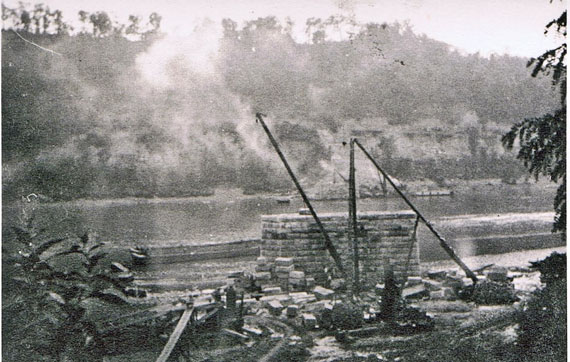
Construction of the Piers for the Bridge.
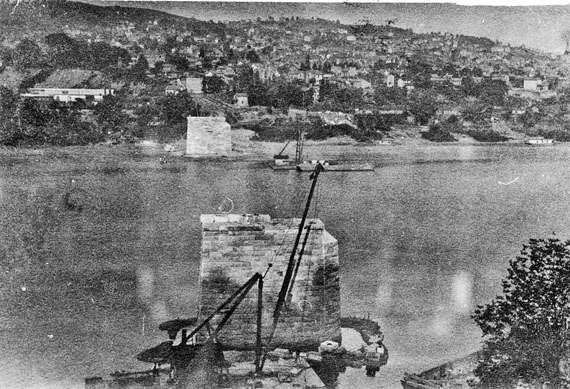
Construction of the Piers for the Bridge.
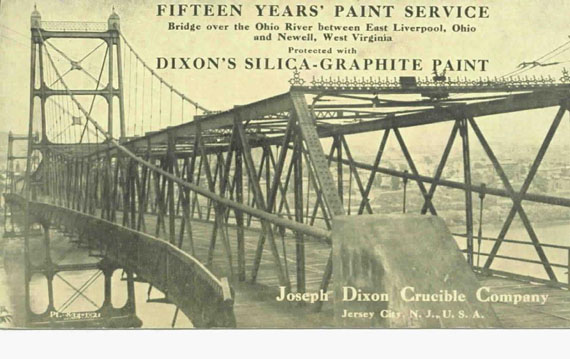
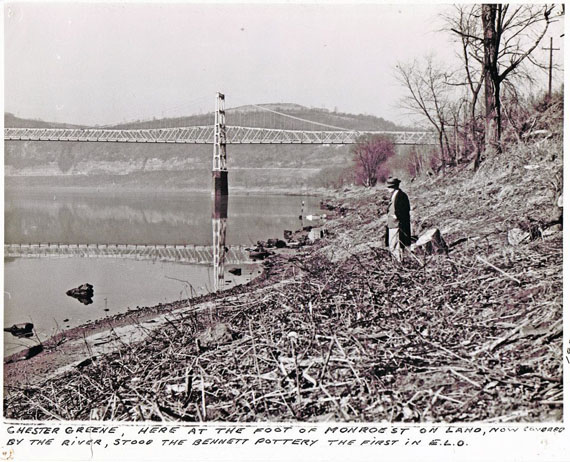
The text at the bottom of his page is incorrect. If this was really the Bottom of Monroe Street that bridge would appear much Larger since Monroe Street was only a block from the Bridge. It is more likely that this would be the foot of Jefferson Street. or maybe even Jackson St.
There was a mention of trolley tracks in some of the text on this site. In late Spring or early summer this year, 2013) the pavement on part the street from W 5th Street onto the Newell Bridge was torn up and repaved. Thanks to a heads up from Jeff Langdon, who is one of our ELHS photographers and who has contributed articles to this site as well, we were able to photograph thosetrackss that sill exist under the old and now new pavement. It may be a long timebeforee they are visible again.
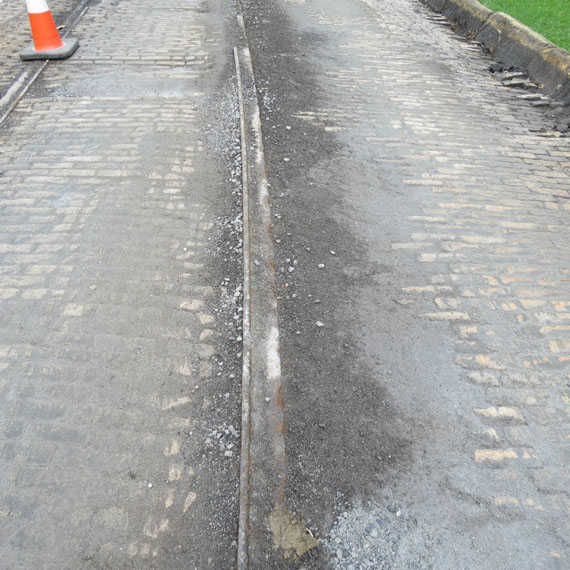
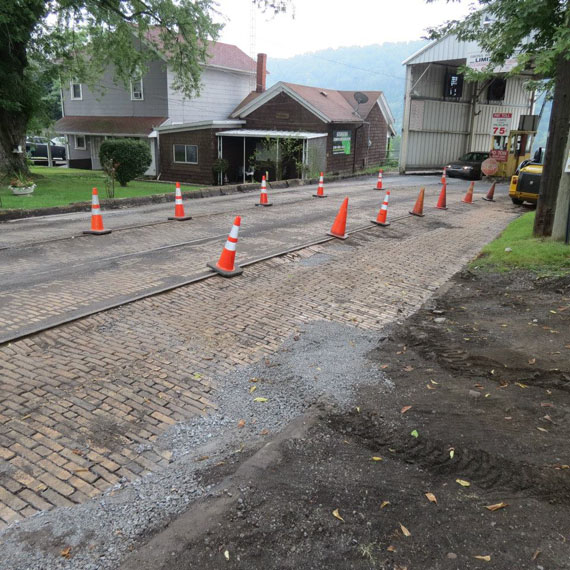
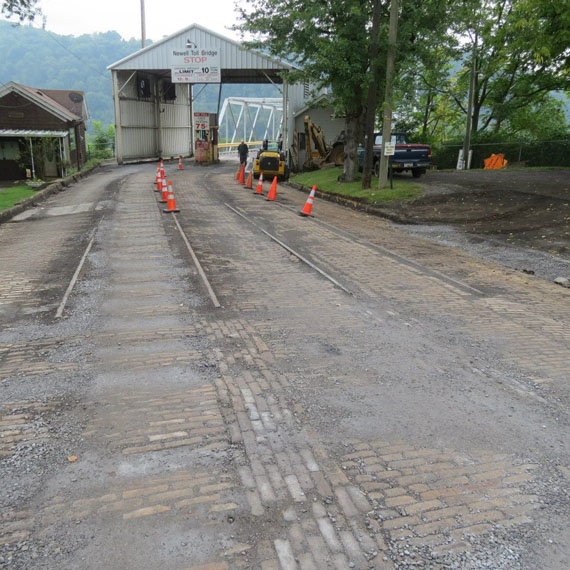
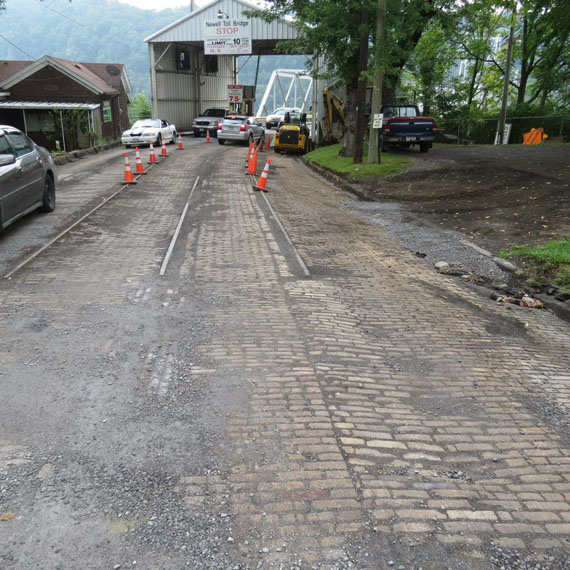
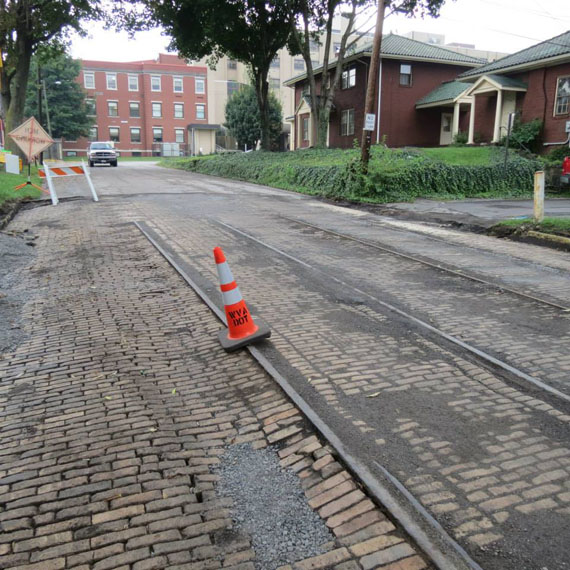
Another aspect of the local transportation network which caused anxiety for city officials and contributed toward traffic problems in East Liverpool was the closing of the Chester Bridge and the delays in constructing its replacement. The Chester Bridge was condemned and closed to traffic in the spring of 1969, leaving only the Newell toll bridge available for crossing the Ohio River. The state highway department director said the engineering survey revealed that the bridge was" . . . so badly deteriorated that it might fall of its own weight . . ." and could not be repaired. The bridge was razed in 1970. Complaints from local merchants, commuters, and residents were immediate. Traffic jams, especially during the evening "rush hour" occurred daily. A count of vehicles crossing the Newell Bridge on 11 February 1970 revealed that 3,943 automobiles entered East Liverpool and 3,124 exited during the twelve hour period between eight a.m. and eight p.m. East Liverpool's streets were simply not designed to accommodate a heavy volume of vehicles and traffic "bottlenecks" became a constant complaint. Racing enthusiasts leaving the city for Waterford Park below Newell were characterized as the "most inconsiderate, reckless, heedless, discourteous, disdainful clods ever found behind the wheel of an auto anywhere . ... " In July 1970 Local 9 of the IBOP sent letters to the Governor of West Virginia and their congressman urging speedy construction of the new bridge. Traffic, they said, for hundreds of its members commuting from East Liverpool to Newell potteries was "almost unbearable at times." Residents, businessmen, and workers alike were forced to "bite the bullet" and settle into years of aggravation and economic loss because of jurisdictional red tape between officials of Ohio and West Virginia and adjacent highway considerations. The new Jennings Randolph Bridge was opened to traffic in November of 1977.45 The City of Hills and Kilns --CHAPTER 9 - 1950-1984-381
This site is the property of the East Liverpool Historical Society.
Regular linking, i.e. providing the URL of the East Liverpool Historical Society web site for viewers to click on and be taken to the East Liverpool Historical Society entry portal or to any specific article on the website is legally permitted.
Hyperlinking, or as it is also called framing, without permission is not permitted.
Legally speaking framing is still in a murky area of the law though there have been court cases in which framing has been seen as violation of copyright law. Many cases that were taken to court ended up settling out-of-court with the one doing the framing agreeing to cease framing and to just use a regular link to the other site.
The East Liverpool Historical Society pays fees to keep their site online. A person framing the Society site is effectively presenting the entire East Liverpool Historical Society web site as his own site and doing it at no cost to himself, i.e. stealing the site.
The East Liverpool Historical Society reserves the right to charge such an individual a fee for the use of the Society’s material.